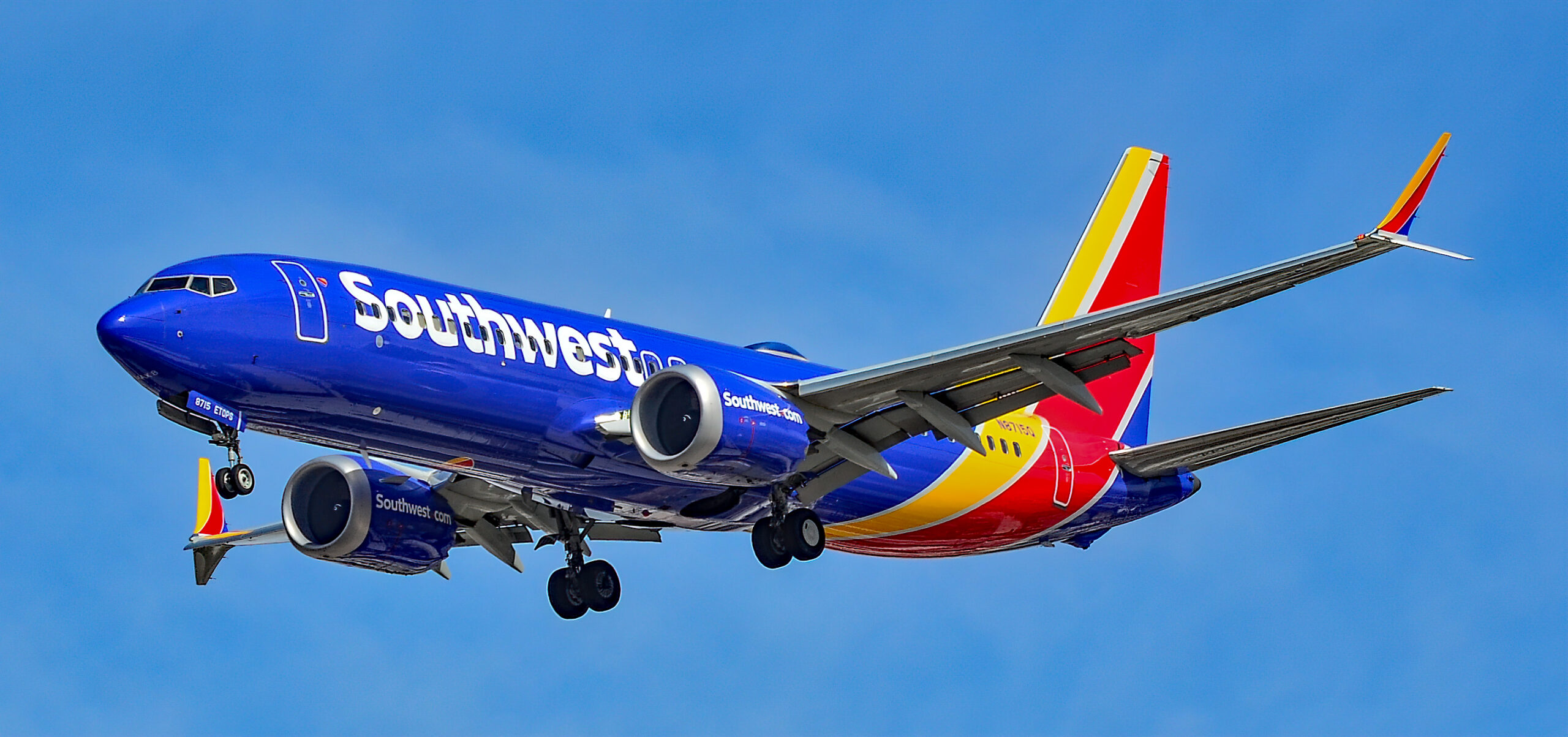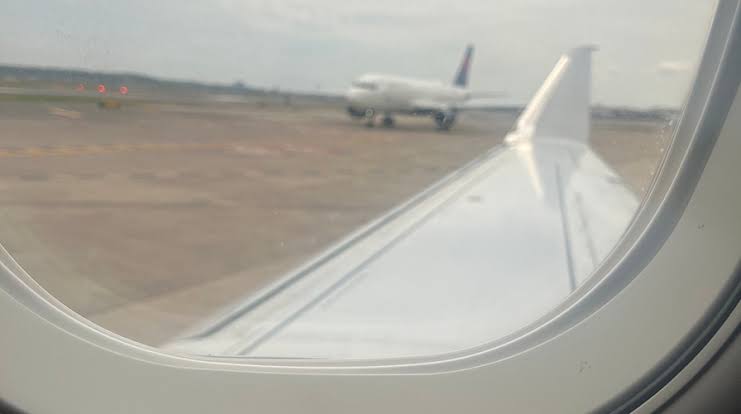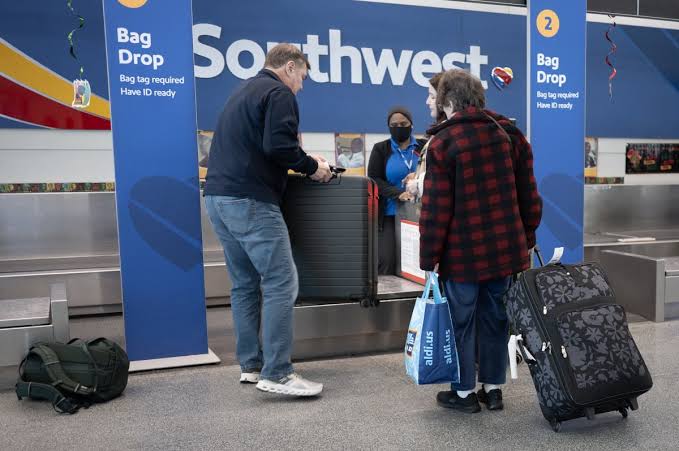Southwest Airlines Boeing 737-700 Rolls Off Runway
Southwest Airlines Boeing 737-700 Rolls Off Runway at Dallas Love Field
March 19, 2025
In a surprising turn of events yesterday at Dallas Love Field, a Southwest Airlines Boeing 737-700 experienced a runway excursion, rolling off the tarmac shortly after departure. The incident, which occurred during the early afternoon hours, has prompted immediate attention from airport authorities, aviation safety experts, and the airline itself. While preliminary reports indicate no injuries among passengers or crew, the event has raised important questions about runway safety, operational procedures, and aircraft handling.
The Incident Unfolds
According to eyewitnesses and initial statements from airport officials, the incident took place around 1:45 PM local time when the Boeing 737-700, parked at the gate and undergoing routine pre-flight checks, was scheduled for departure. As the aircraft taxied towards the active runway, a sudden shift in momentum was observed. Video footage captured by onlookers shows the aircraft beginning to veer slightly off its intended path just before liftoff. Although the deviation was minor, it led to the aircraft rolling off the designated runway boundary.
An airport spokesperson stated, “Our immediate priority was the safety of all passengers and crew. We activated our emergency response protocols as soon as we observed the aircraft deviating from its expected path. Fortunately, no injuries have been reported, and all passengers remain in good condition.” The swift response by the emergency teams minimized any potential escalation of the situation.
Immediate Response and Safety Protocols
Dallas Love Field’s emergency response team, well-practiced in handling aircraft-related incidents, was quick to secure the area and assess the situation. Emergency vehicles and fire trucks were dispatched to the scene as a precautionary measure. Onsite safety engineers conducted a rapid evaluation of the runway’s condition to rule out any external factors such as debris or weather-related issues that might have contributed to the mishap.
Southwest Airlines, known for its robust safety record, issued a statement immediately following the incident. The airline emphasized that the safety of their customers is paramount and that an internal investigation had been launched to determine the exact cause of the runway excursion. “We are working closely with the airport authorities and the National Transportation Safety Board to conduct a thorough review of the event,” the statement read. “Our initial findings suggest that the incident was isolated, and we are taking all necessary steps to ensure the continued safety of our operations.”
Possible Contributing Factors
Preliminary investigations are focusing on several potential factors that could have contributed to the incident. Experts are examining whether a mechanical failure, a pilot error, or adverse environmental conditions might have played a role. While weather conditions were reportedly stable at the time, the mechanics of the incident have led analysts to scrutinize the aircraft’s braking system and tire condition.
A seasoned aviation expert commented, “Runway excursions, while rare, can result from a combination of factors. Even minor issues with the braking system or tire integrity, coupled with pilot response time, can lead to deviations from the runway centerline. It’s essential to review all maintenance logs and flight data recorders to understand what exactly happened here.”
Passenger and Crew Reactions
Passengers on board the Boeing 737-700 described the event as “startling” yet “quickly managed” by the flight crew. One passenger, who wished to remain anonymous, shared, “We felt a slight jolt as the plane started to move in a different direction. However, the crew remained calm and assured us that everything was under control. It was a nerve-wracking experience, but I trust that the airline is doing everything to ensure our safety.”
Flight attendants on the aircraft were reportedly well-prepared for such emergencies, having undergone extensive training in emergency protocols. Their prompt communication and calm demeanor helped prevent panic in the cabin. In interviews following the incident, several crew members expressed relief that the situation did not escalate into a more dangerous scenario.
Technical Aspects of the Boeing 737-700
The Boeing 737-700 is a workhorse of many airline fleets around the world, known for its reliability and efficiency. Southwest Airlines, in particular, has relied on this model for decades. The aircraft is designed for short to medium-haul flights, typically accommodating between 126 and 149 passengers in a typical two-class configuration. Despite its longstanding reputation for safety, even the most reliable aircraft can encounter unforeseen challenges.
Aviation maintenance experts point out that routine checks and strict adherence to maintenance schedules are critical in preventing mechanical issues. “Every component, from the engines to the braking system, undergoes rigorous inspections,” noted a maintenance supervisor familiar with the Southwest fleet. “However, even with strict protocols, occasional anomalies can occur. It’s our job to identify and correct them before they lead to incidents.”
The Role of Pilot Training and Automation
In recent years, increased automation in commercial aircraft has significantly reduced the number of accidents related to human error. However, the role of the pilot remains crucial, especially in handling unexpected events during critical phases of flight such as takeoff and landing. In this incident, experts are reviewing the flight data recorder to analyze the sequence of events leading up to the runway excursion.
Pilot training programs at Southwest Airlines include extensive simulator sessions designed to prepare crews for various emergency scenarios, including runway excursions. “Our pilots are trained to respond to a wide range of situations, from minor deviations to full-scale emergencies,” a Southwest Airlines training officer explained. “While automation supports many aspects of flight, human oversight is indispensable, particularly when rapid decision-making is required.”
Industry-Wide Implications
Although the incident is currently classified as an isolated event, it has sparked a broader conversation within the aviation industry about runway safety and operational risk management. Airports and airlines across the country are reviewing their procedures to ensure that similar incidents can be prevented in the future. Regulatory bodies such as the Federal Aviation Administration (FAA) are also expected to take a closer look at current standards and guidelines.
The National Transportation Safety Board (NTSB) has confirmed that they will be involved in the investigation, examining all aspects of the incident—from the physical condition of the runway to the mechanical state of the aircraft and the actions of the flight crew. An NTSB representative stated, “Every incident, no matter how minor it appears initially, provides valuable insights that can lead to improvements in safety protocols. Our goal is always to learn and prevent future occurrences.”
Community and Economic Impact
While no injuries have been reported, the incident did cause temporary disruptions in the operations at Dallas Love Field. Flights were briefly delayed as safety inspections were conducted, leading to minor inconvenience for hundreds of passengers. Local businesses and the community were quick to offer support, with several nearby hotels and restaurants extending their services to affected travelers.
Economic analysts note that while such incidents can have short-term impacts on airline schedules and airport operations, the long-term effects on the airline’s reputation are usually minimal when the response is handled effectively. Southwest Airlines’ proactive communication and transparent investigation process have reassured many customers and industry stakeholders that safety remains their top priority.
Looking Ahead: Safety Measures and Investigations
As the investigation continues, both Southwest Airlines and aviation regulators are expected to implement additional safety measures if necessary. This could include enhanced pilot training, more frequent maintenance checks, or upgrades to runway monitoring systems at major airports. The incident serves as a reminder of the inherent risks in air travel and the constant vigilance required to maintain safety standards.
Aviation safety is a dynamic field, continually evolving as new technologies and procedures are introduced. Incidents such as this one, though rare, offer an opportunity for the industry to reassess and improve. By learning from these events, airlines and regulatory bodies can implement changes that may prevent future occurrences and further enhance the safety of air travel for millions of passengers.
Conclusion
Yesterday’s incident involving a Southwest Airlines Boeing 737-700 rolling off the runway at Dallas Love Field underscores the importance of robust safety protocols, effective pilot training, and rigorous maintenance practices in the aviation industry. While no injuries were reported and the incident appears to be isolated, the comprehensive investigation that is underway will shed light on the specific causes and lead to improvements that benefit the broader aviation community.
Southwest Airlines has reaffirmed its commitment to safety and transparency, and the swift response by airport emergency teams has been widely commended. As details of the investigation emerge, passengers and industry experts alike will be watching closely, eager to see how this incident shapes future operational procedures and safety standards. The lessons learned from this event will undoubtedly contribute to making air travel even safer for everyone.
The incident is a testament to the challenges and complexities of modern aviation, where even the smallest anomaly can lead to significant operational disruptions. As the investigation unfolds, stakeholders remain committed to ensuring that every possible measure is taken to prevent such occurrences in the future, reinforcing the trust that millions of passengers place in the aviation industry every day.






